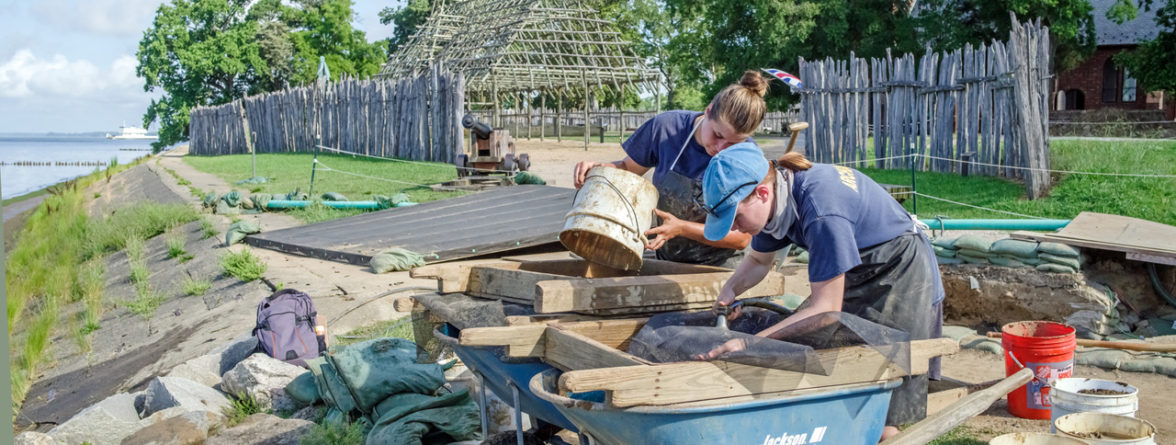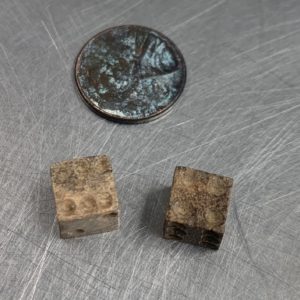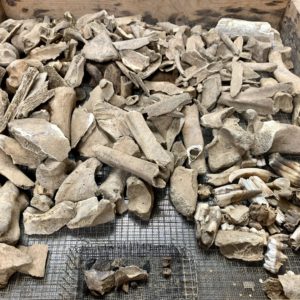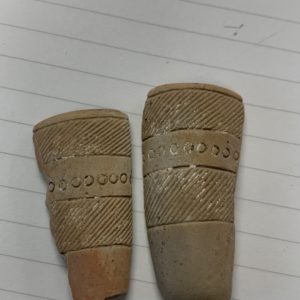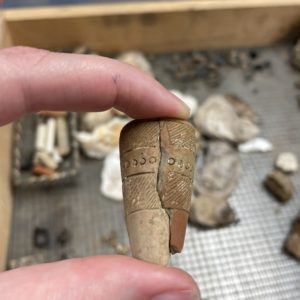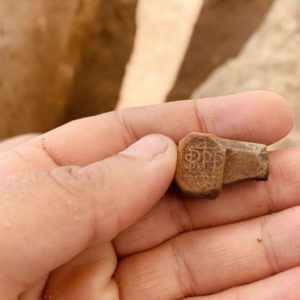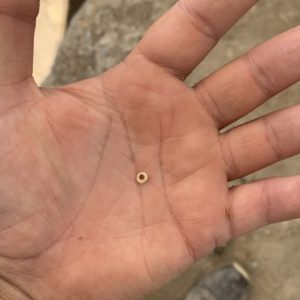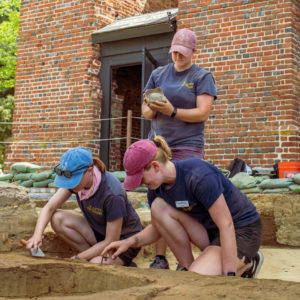We are in the throes of the summer and in Virginia that means sunshine and humidity. For Jamestown, that also means amazing new discoveries! Excavations continue both at the Seawall and to the west of the Church Tower.
Down at the Seawall, the remaining midden in Test Unit 188 has been removed and water-screened, yielding some very exciting and unique artifacts that date mostly from the 1630’s and 1640’s. These artifacts include: two dice made out of bone, some uniquely decorated pipe stems, a shell bead made by a Native American, LOTS of animal bone and bottle glass, and much more. The items found can help to piece together a picture of the colonists’ everyday life, including what they ate, what they used, and even what they traded for.
Now that the midden has been removed in this test unit, a feature has been exposed that may potentially be a ditch that would be associated with James Fort. Right on top of a part of this ditch sat a fragment of Spanish Olive Jar, which dates from the late 16th century to the early 17th century. This date range fits with the early fort period, but more of this feature needs to be uncovered to get a better idea of what it was.
In the central test unit down at the seawall, work has resumed to uncover more of the midden. Due to the amount of disturbance from the sceptic tank and the seawall, it has taken a bit more time to locate and expose the 17th-century trash deposit in this area. After removing a part of the sewer pipe and modern fill below it, portions of the midden proved to be in-tact and undisturbed.
The excavation by the Church Tower is moving along as well. In two of the three open test units, the layer of burned debris mentioned last month has been removed. There is a possibility that the deposit may be from when the church burns during Bacon’s Rebellion in September 1676. In the northern-most test unit, we have been working on uncovering the rest of the brick walkway. It seems that it moves further to the north, but it is still in very poor/crumbly condition. Because it is located on top of the burned layer, it would make sense for the pathway to be from anywhere between the mid-17th century to the 18th century. We continue to excavate deeper to uncover any remnants of early fort-period structures.
related images
- A pair of dice, made out of bone next to a modern penny for size comparison.
- One of many trays of animal bones found in a single day of water screening the dirt from the trash dump.
- Two pieces of a locally-made decorated tobacco pipe bowl that mend together. Found in the midden.
- The two halves of the pipe bowl fit back together.
- A piece of a locally -made tobacco pipe, decorated on the heel with letters and three hearts.
- A close up of the maker’s mark.
- A Virginia Indian made shell bead, in the hands of an archaeologist after discovery from the midden at the Seawall.
- Archaeologists trowel cleaning the layer with burnt material near the church tower.
- Archaeologist Caitlin Delmas holding the base of a 17th century wine bottle while Archaeologists Natalie Reid and Noelle Wobig trowel clean.


